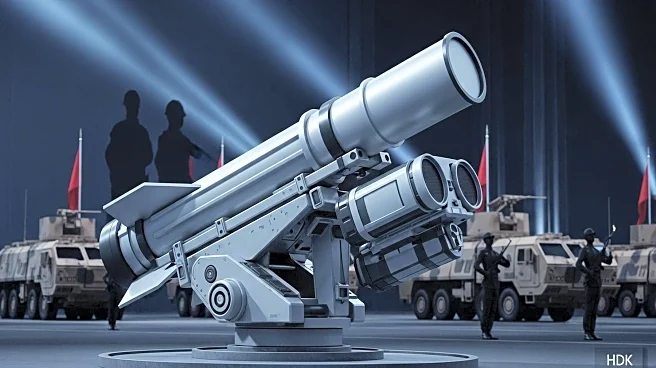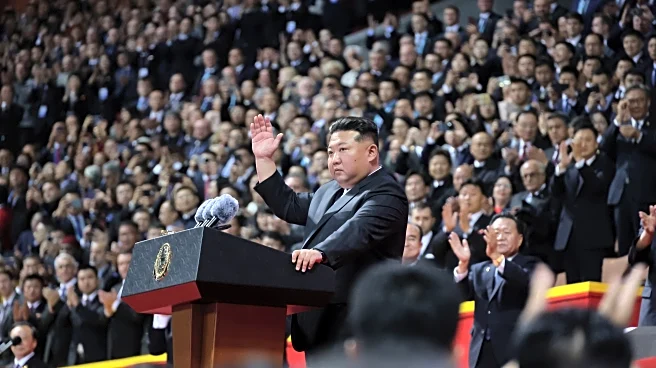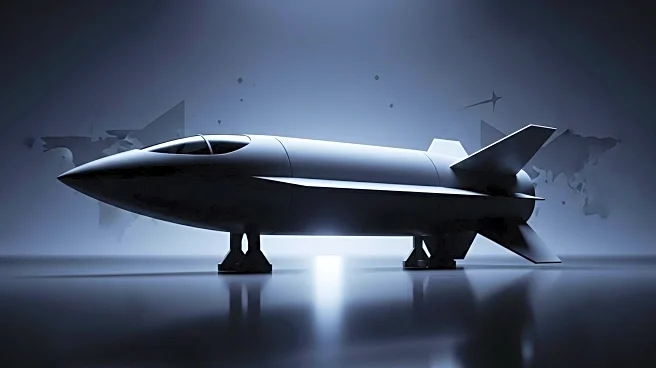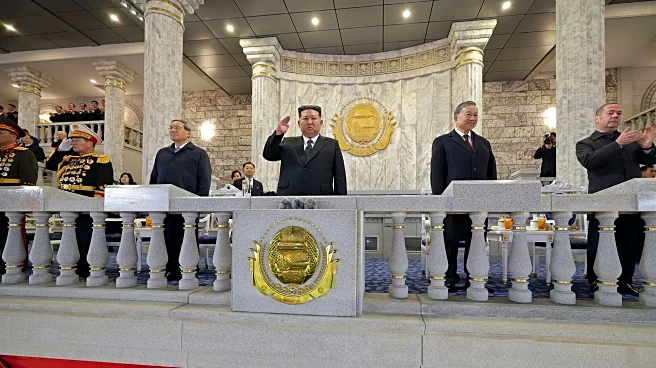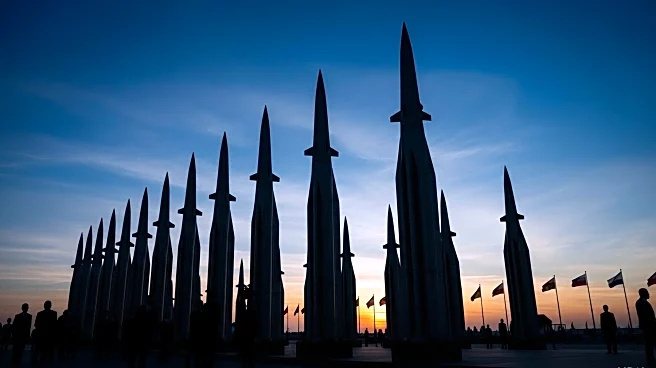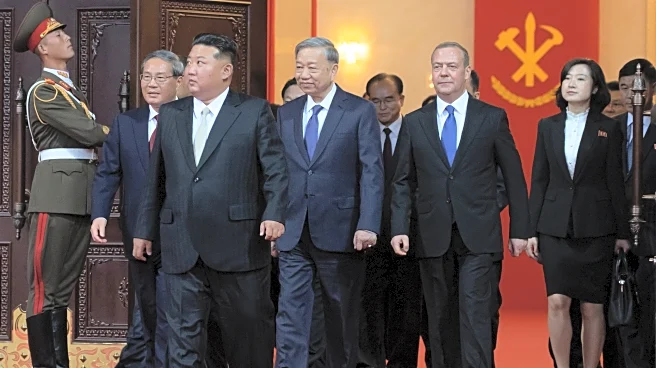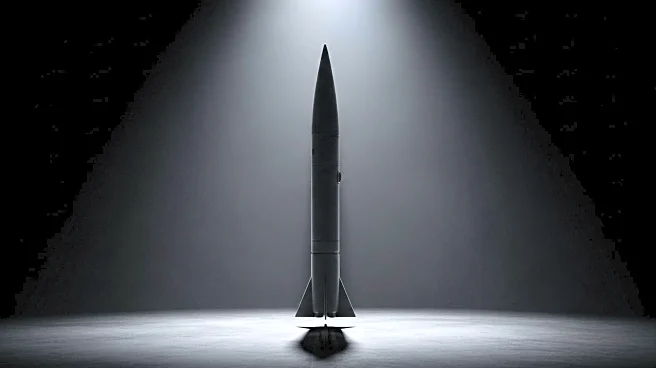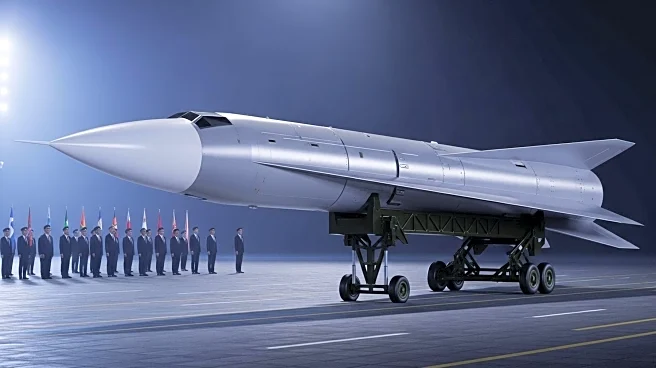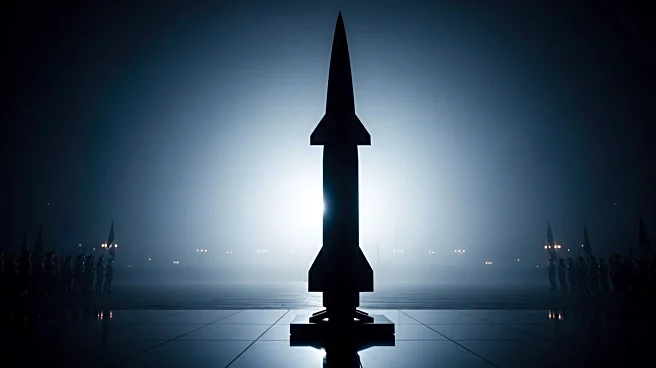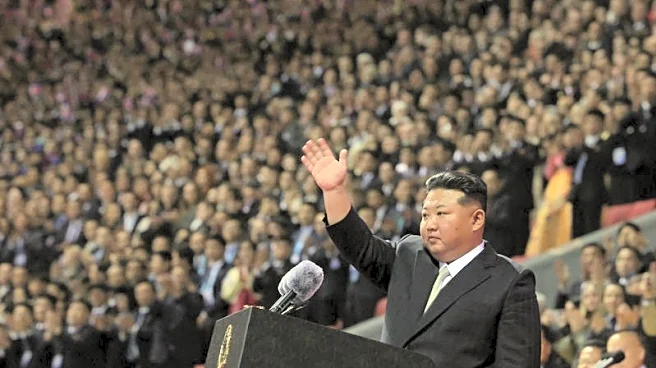What's Happening?
North Korea showcased its latest military advancements during a parade marking the 80th anniversary of the ruling Workers' Party of Korea. The event featured the debut of the Hwasong-11Ma hypersonic glide vehicle and the Hwasong-20 intercontinental ballistic missile (ICBM), which are described as North Korea's most powerful nuclear strategic weapons. The parade follows a diplomatic visit by Kim Jong Un to Beijing, where he strengthened ties with China and Russia. The new weapons systems, including the maneuverable hypersonic warhead, are designed to evade detection and interception, posing a significant challenge to defense systems.
Why It's Important?
The unveiling of these advanced weapons highlights North Korea's ongoing commitment to expanding its military capabilities, which could escalate tensions in the region and impact global security dynamics. The development of hypersonic and ICBM technology represents a strategic shift, potentially altering the balance of power and prompting responses from the United States and its allies. This demonstration of military prowess may influence diplomatic negotiations and international relations, as countries assess the implications of North Korea's enhanced arsenal.
What's Next?
The international community is likely to respond with increased diplomatic efforts to address the potential threat posed by North Korea's new weapons. The United States and its allies may consider strengthening defense systems and revising military strategies to counteract the capabilities of hypersonic and ICBM technology. Additionally, there may be calls for renewed dialogue and negotiations aimed at denuclearization and reducing military tensions on the Korean Peninsula. Monitoring and intelligence efforts will be crucial in assessing North Korea's future actions and intentions.
Beyond the Headlines
The development of hypersonic weapons raises ethical and strategic questions about the proliferation of advanced military technology and its impact on global security. It challenges existing defense paradigms and may lead to an arms race as countries seek to develop countermeasures. The cultural and political implications of North Korea's military advancements could influence regional alliances and the perception of power dynamics in East Asia. Long-term, this development may drive innovation in defense technology and reshape international security policies.

